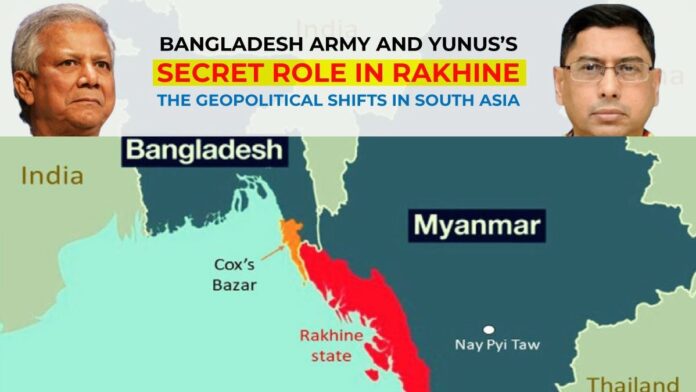Southeast Asia is fast becoming the epicenter of geopolitical unrest. At the heart of this turbulence lies Myanmar’s Rakhine State and its surrounding regions, where multiple ethnic insurgent groups, along with regional and global powers, are entangled in a complex web of strategic interests. The potential involvement of the Bangladesh Army in a US-backed proxy operation is adding a new layer of complication to this already volatile equation.
Logistical Build-up and Drone Technology in Teknaf and Cox’s Bazar
Reliable sources reveal that the Bangladesh military is already establishing extensive military infrastructure in Cox’s Bazar and Teknaf. A large logistical base is being constructed on the Teknaf border to supply food, medicine, and other “non-lethal” aid to insurgent groups like the Arakan Army (AA) and the Chin National Front (CNF).
Meanwhile, the expansion of Cox’s Bazar airport is nearing completion. Plans are underway to convert the facility into a drone base, which may deploy advanced Turkish-made drones with technical support from the United States. This drone hub is expected to play a critical role in surveillance and intelligence gathering over Rakhine State.
Presence of Arakan and Chin Rebels in Bangladesh and US Involvement
According to special security sources, representatives of the Arakan Army and CNF are currently staying in Dhaka and have held secret meetings with senior US diplomatic and military officials. Among those involved are Chargé d’Affaires Susan Stevenson, stationed in Naypyidaw, along with two Assistant Secretaries from the US Department of State focusing on South and East Asia.
The main goal of these discussions is to devise an effective militia-based warfare strategy against Myanmar’s military junta, with Bangladesh positioned as a crucial logistical and intelligence hub.
Humanitarian Corridor Tied to Rohingya Repatriation
Under the leadership of Bangladesh’s National Security Advisor Khalilur Rahman, an “aid corridor” plan has been drafted. It envisions the repatriation of at least 80,000 Rohingya refugees to the Buthidaung and Maungdaw regions of Rakhine in a post-conflict scenario. The current government, led by Mohammad Yunus, has already prepared a preliminary list of potential returnees.
This initiative could serve both as a cover for Bangladesh’s newly adopted geopolitical role and as a means to restore its humanitarian image on the international stage.
Attempt to Unite ARSA and the Narayanganj ‘Arrest’ Drama
A recent incident in Narayanganj, near Dhaka—where ARSA leader Ataullah Abu Ammar Jununi and his associates were reportedly “arrested”—has caused public uproar. Though officially termed as an arrest, the reality might be more nuanced. It is speculated that this move is part of a larger strategy to incorporate ARSA into the rebel coalition, despite existing ideological divides, and steer them toward military unification.
Army Chief’s Strategic Proximity with Washington
Senior officials within the Directorate of Military Operations in Bangladesh have long been involved in plans to expand strategic influence in the region. The recent meeting between USARPAC (United States Army Pacific) Deputy Commanding General J.B. Vowell and Bangladesh’s Army Chief Waqar Uz-Zaman is believed to be a key step in advancing this agenda.
Blueprint for a New State Called ‘Arakan Federation’? A Geopolitical Explosion Ahead
Many analysts believe the underlying aim of these military developments is not merely to gain influence over Rakhine State, but to pave the way for a broader geopolitical entity—an “Arakan Federation.” This envisioned federation could potentially incorporate parts of border regions such as Teknaf and Bandarban in Bangladesh and Manipur and Mizoram in India.
The formation of such a state would not only threaten Bangladesh’s territorial integrity but also pose a serious security risk to India’s northeastern region. Indian defense analysts have already expressed concern over these unfolding dynamics.
Is Southeast Asia Heading Toward a Volatile Future?
If the alliance between Bangladesh, the US, and insurgent groups becomes operational, it could dramatically reshape Southeast Asia’s geopolitical map. The consequences would be far-reaching—not only militarily, but also in humanitarian, economic, and strategic dimensions.
Ultimately, the responses of India, China, and ASEAN nations will be pivotal in determining the future trajectory of this explosive situation.





